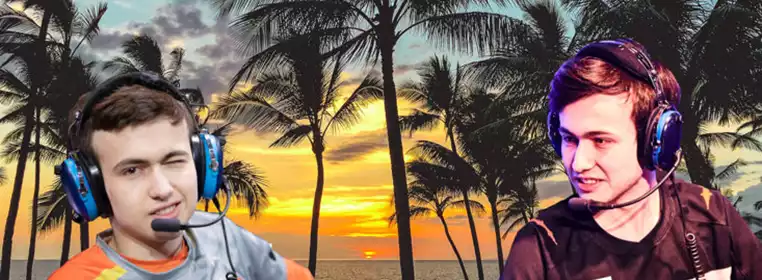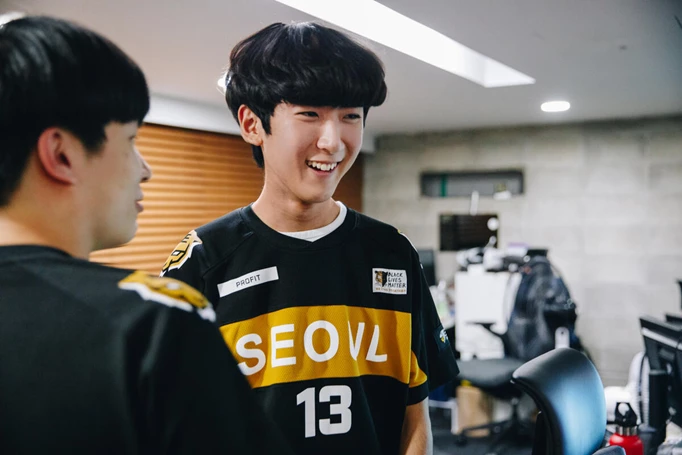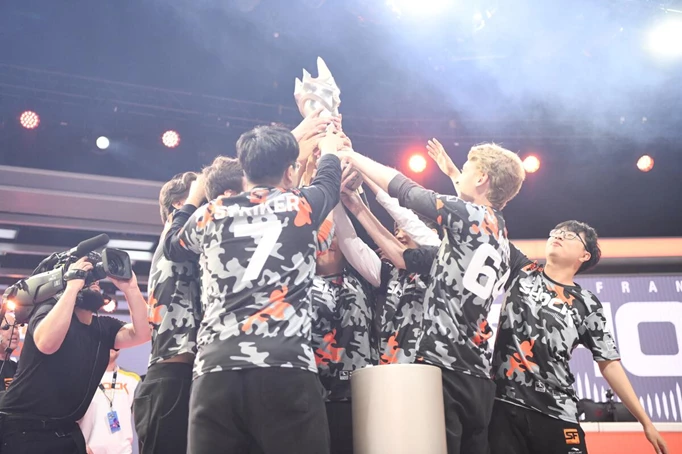Why Season 4 Is The Worst Time For Your Overwatch League Team To Suck

Seeing Super and the SF Shock twice but you're sober - Why in some aspects, being a Titans fan would’ve been better than being a Dynasty and Gladiators supporter - The rich get richer - Some owners should spend to save money - The battle for broadcast time and a possible second wave of signings.
Recently, the Overwatch League announced its changes for its fourth season, with the move of the LA Valiant to the Eastern region soaking up all the attention for understandable reasons, kicking off an avalanche of news about the team. However, some much more impactful changes to the average fan’s Overwatch experience flew largely under the radar. One particular change boils down to: If your team sucks, you will get to see them play significantly less than in prior seasons. Worse yet, chances are you might not be able to enjoy them in the high points of the season at all. The incentives set turn out to be quite exciting too, given that it might also hurt your team owner's pocket to field a bad team much more than in previous years.
What’s this change about?
According to the League, the regular-season in 2021 will be made up of four international tournaments, which teams have to qualify for by playing four qualifying matches each. Most crucially, it’s not logistically feasible to have international events between all teams, as the League is currently planning to send qualified North American teams to Hawaii to play from there.
Only having four times for qualifying matches, the amount of guaranteed regular-season matches has shrunk again, initially from 40 per team in season 1, 28 in season 2, 21 in season 3, to now only 16 in season 4. Since tournament participation is no longer guaranteed, the average amount of games a team will play is set to decrease significantly, more so if your team finds itself at the bottom of the rankings.
An educated guess on the number of teams qualifying for each tournament sees only five Western and three eastern teams participating in each event at the end of each cycle while the other 12 teams stay home and enjoy two off-weeks. If we assume that eight teams will see bracket play in a single-elimination bracket, which appears likely as larger formats should be even more logistically challenging, a team making the final will have played at least three matches. If we assume a team of the level of dominance of the San Francisco Shock, that nets the team a total of 12 additional matches in season 4. Furthermore, we can assume that given the feedback of General Managers as well as the general audience, not every team will be invited into the season 4 playoffs, likely adding at least another four matches to the total count.
In essence, Shock fans might get to see twice as many games of their favourite team playing as fans of a bottom team. Of course, not all matches are created equal, and while the sheer amount of screen time your team will likely get is already cut down, chances are you won’t see them in the most exciting matches of the season in high-pressure situations during the tournaments and playoffs. It goes without saying that also fewer eyes will be on them, with on the average regular-season game gathering significantly fewer viewers in comparison to tournament or playoffs scenarios, with an approximated average viewership difference of these formats of about 20 - 120%.
As it looks, a fan of a bottom tier team can expect to get less broadcast time for their team, fewer player interviews, less social media interaction on Hawaii, less everything fun and rewarding. Arrogantly, you might think your allegiance with a mid-tier table team would keep you from suffering of said content shortage? History and predictive modelling has some terrible news for you.

 Click to enlarge
Click to enlargeHow would that have worked last season?
In a GGRecon interview with Jon Spector, the Vice President of the Overwatch League, talked about their reasoning behind increasing the number of qualification matches from three to four matches. Over the last season, the Overwatch League had used both sample sizes in both regions to varying degrees. The results showed that a four-match qualifier became much more accurate at getting the expected teams into the playoffs, making the system fairer and less volatile to strength of schedule abnormalities. That, of course, is good in terms of the competitive integrity of the league, but also means that worse teams will luck out less frequently on catching a string of good matchups to qualify.
The scope of the impact of the change becomes apparent when comparing them against the result of season 3. Assuming that the cut-off would’ve been in the top 5 for North America and in the top 3 and we apply the cutoff windows present at the time, naturally, we rightfully assume that teams like the Uprising, the Outlaws, the Defiant, the Spitfire, and the Justice would’ve never qualified for one of the three tournaments. What we might not have on our radar is that the Gladiators would’ve been barred from participating in any tournaments outside of playoffs, putting a very different light on their season.
While that might still sort of right, nothing illustrates the severity of this change more than that the May Melee and the Grand Finals runner ups Seoul Dynasty would’ve in fact not made a single tournament or even the season playoffs had not every team been invited to the knockout competition in season 3. The team around star player Joon-yeong "Profit" Park would almost certainly have been blown to pieces after a disappointing performance like it would’ve had, changing the tune of their season completely.
On the flip side, only the Philadelphia Fusion, the San Francisco Shock, and the Shanghai Dragons would’ve reached the knockout stages every time. Yes, that means you will likely see Matthew "super" DeLisi at least twice as often as Jiri "LiNkzr" Masalin. Surprisingly, the Vancouver Titans would’ve made Summer Showdown in fourth place on the back of a relatively tame strength of schedule for their three games, further highlighting the importance of having a four-game qualifier.
There’s more parity - So it should be better in season 4, right?
Sort of. Using the assumption of five North American teams and three Asian teams getting to participate in the tournaments while using admittedly likely inaccurate Elo ratings (with backed in assumptions of parity) that will, however, unlikely impact the relevant numbers we are looking at, Eric Doer ran a Monte Carlo simulation with the goal of predicting how many teams will see how many tournaments.
After running 1500 iterations with these assumptions, an average of six teams never saw a single tournament playoff bracket while only three teams would’ve made every single one. To put this in perspective, if you are one of those super fans who try to watch every single Overwatch League game, you will see the top three teams in the League play as much as the bottom six.

 Click to enlarge
Click to enlargeThe rich get richer
When thinking about the things that one could leverage in esports to make a dollar, we can simplify the most important aspects to the volume of fan attention but also the intensity with which the eyes follow your team and with how much heart and soul they reach into their pockets. While we have to clearly outline that viewership minutes and amount spent per fan on the team in things like merch and ticket prices are not the entire story of esports monetisation, they are undoubtedly a significant part of it.
For example, having less air time could mean less exposure for your jersey sponsors, and because tournaments get more viewership, it also means you are missing out on the viewership boost. Arguably more intense bonds between fans and players are forged in moments of high stakes, with playoffs and tournaments being the most frequent providers of special experiences. Perhaps this shouldn’t be overemphasised, after all, some of most beloved teams in the League weren’t necessarily the most successful ones, and location, branding, player personality, and more weigh more significantly into why people support rather than success and its bonuses.
Given these unique set of circumstances that each team might be under, it still appears to be straight forward that some teams stand to gain significantly by reaching thresholds of player skill by which they would unlock more tournament playtime.
While it is unlikely that a team like the Vancouver Titans has an easy and cost-effective solution towards qualifying on every occasion, a team like the Toronto Defiant, a gatekeeping team towards the top 5 of the league might just be able to find one or two players that put them over the edge from qualifying one or two times to qualifying every time, inadvertently locking in season playoffs in doing so. In their case, more than just a competitive budgetary decision, it could be a straight business move to weigh the additional salary of a player like Dong-jun "Rascal" Kim or Hae-seong "Libero" Kim against the expected monetary value loss in tournament air time if they were to miss more of those opportunities because they didn’t have either of those players on their team.
For projected bottom tier teams, it might be economically worth gambling on signing players with niche abilities, trying to roll the dice on hitting a specific meta to squeeze into one or two tournaments while otherwise losing more than with a serviceable all-rounder. After all, the expected chances of some of the teams to make season playoffs are slim to none, and inching closer to an unlikely goal by raising the average level of their play could be ineffective as a brand-building exercise.
With a noticeable incentive shift through these changes, which run counter-clockwise to the ticking clock mean and lean rosters, the Overwatch League could have caused a couple of teams to reevaluate their strategy towards roster building in season 4. Could this snowball into an arm’s race and a second wave of signings?
Images by Neora Aylon and Blizzard Entertainment
